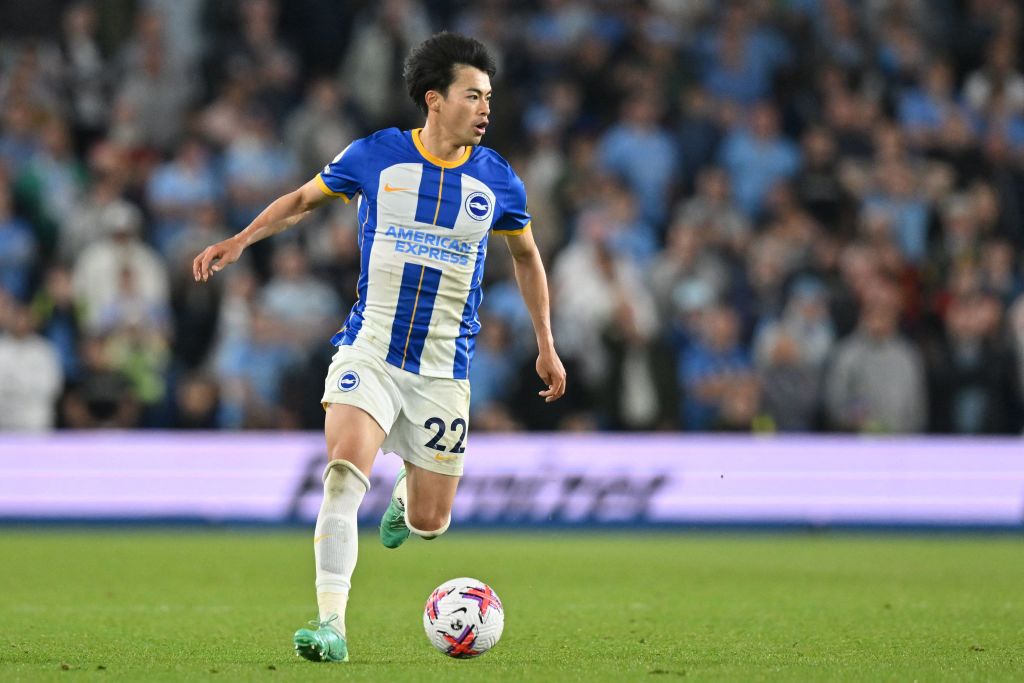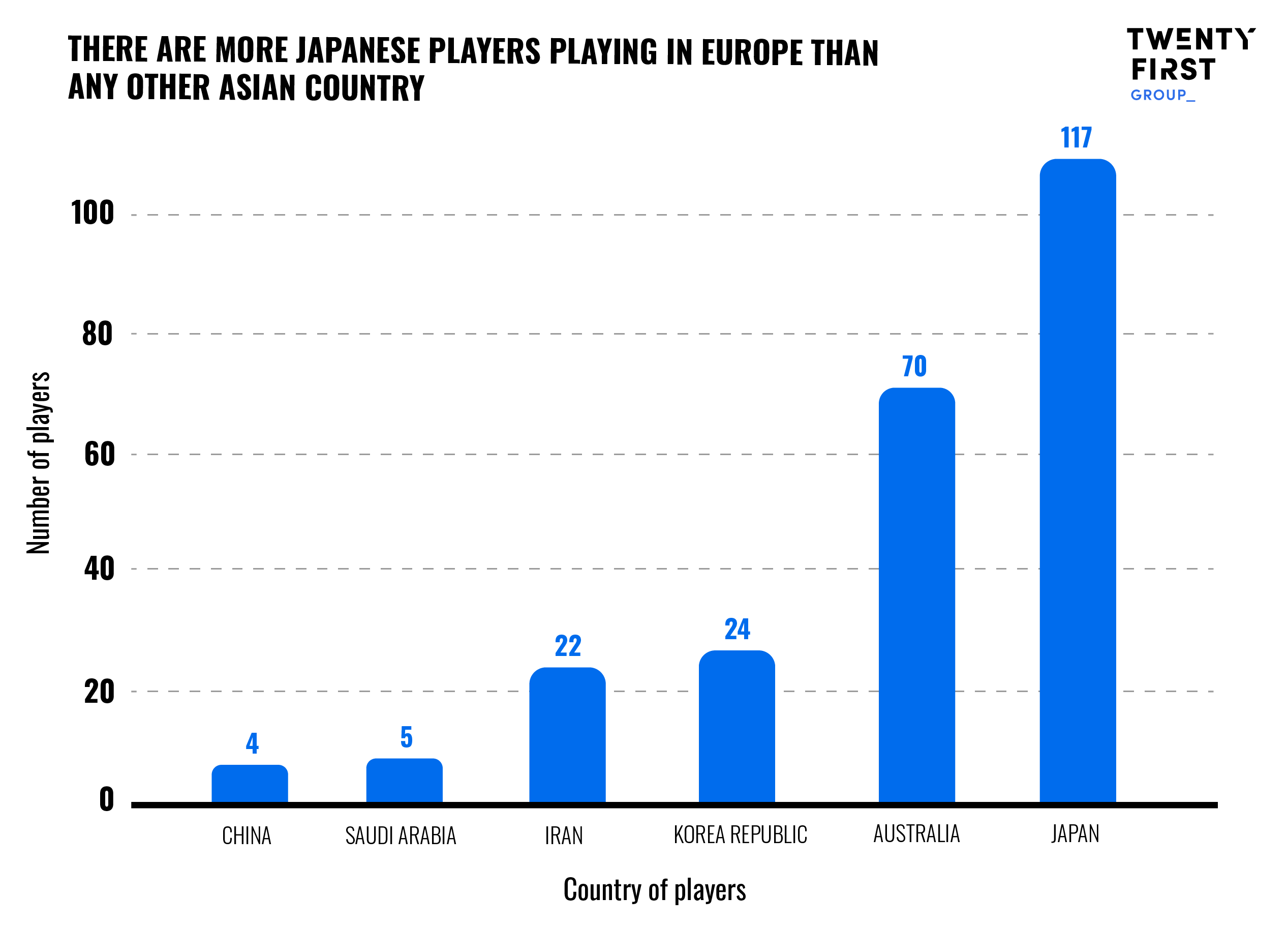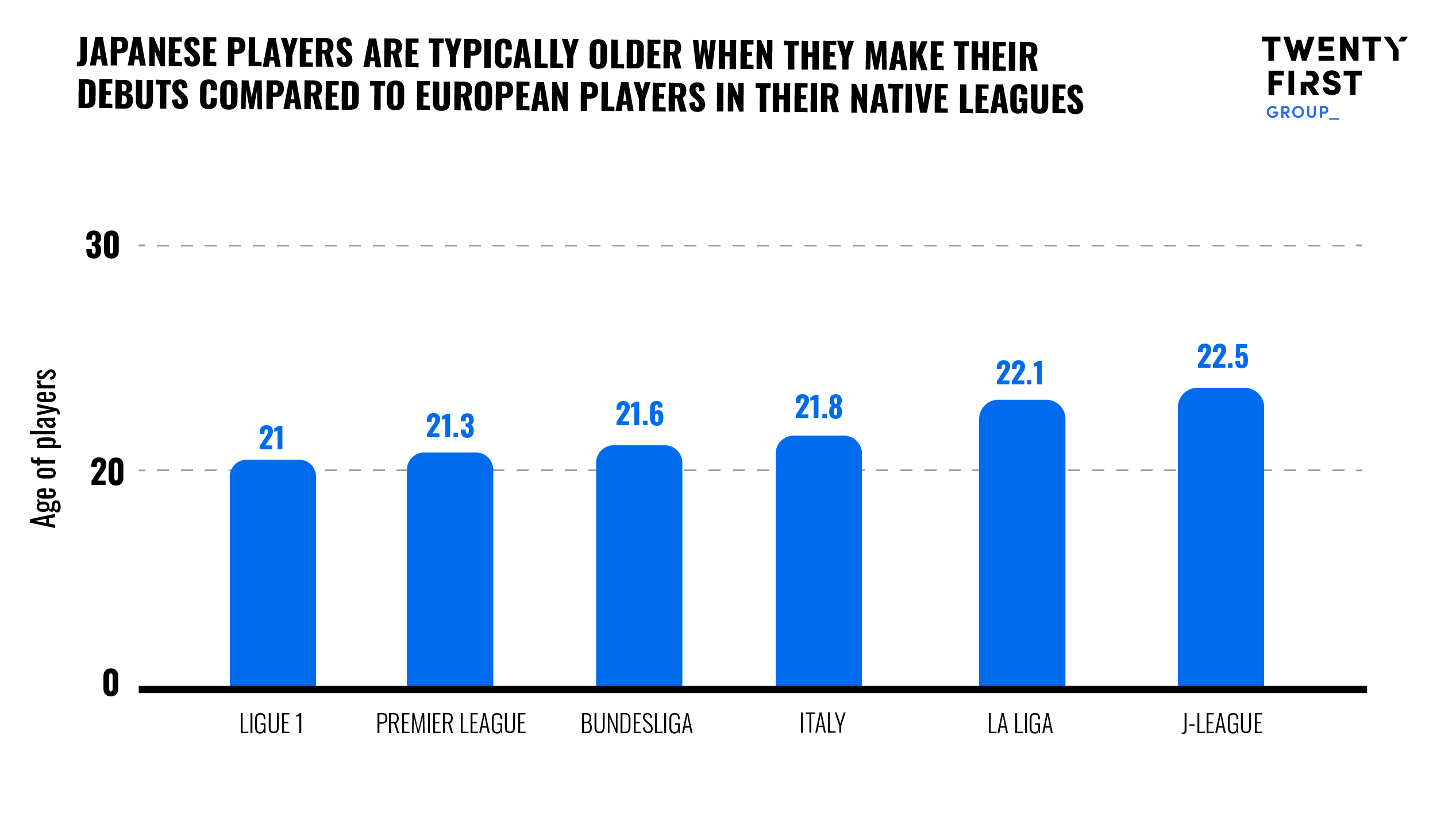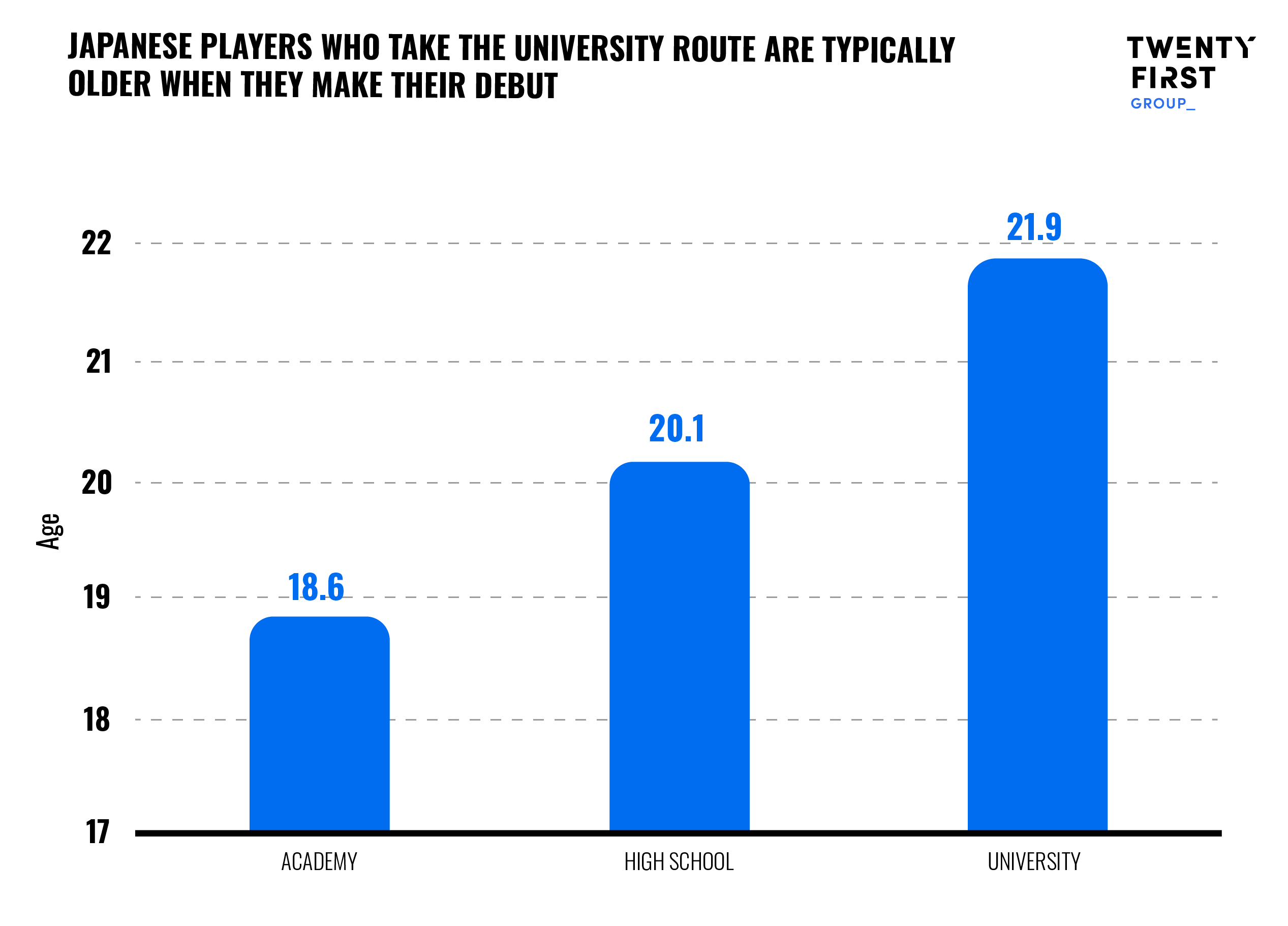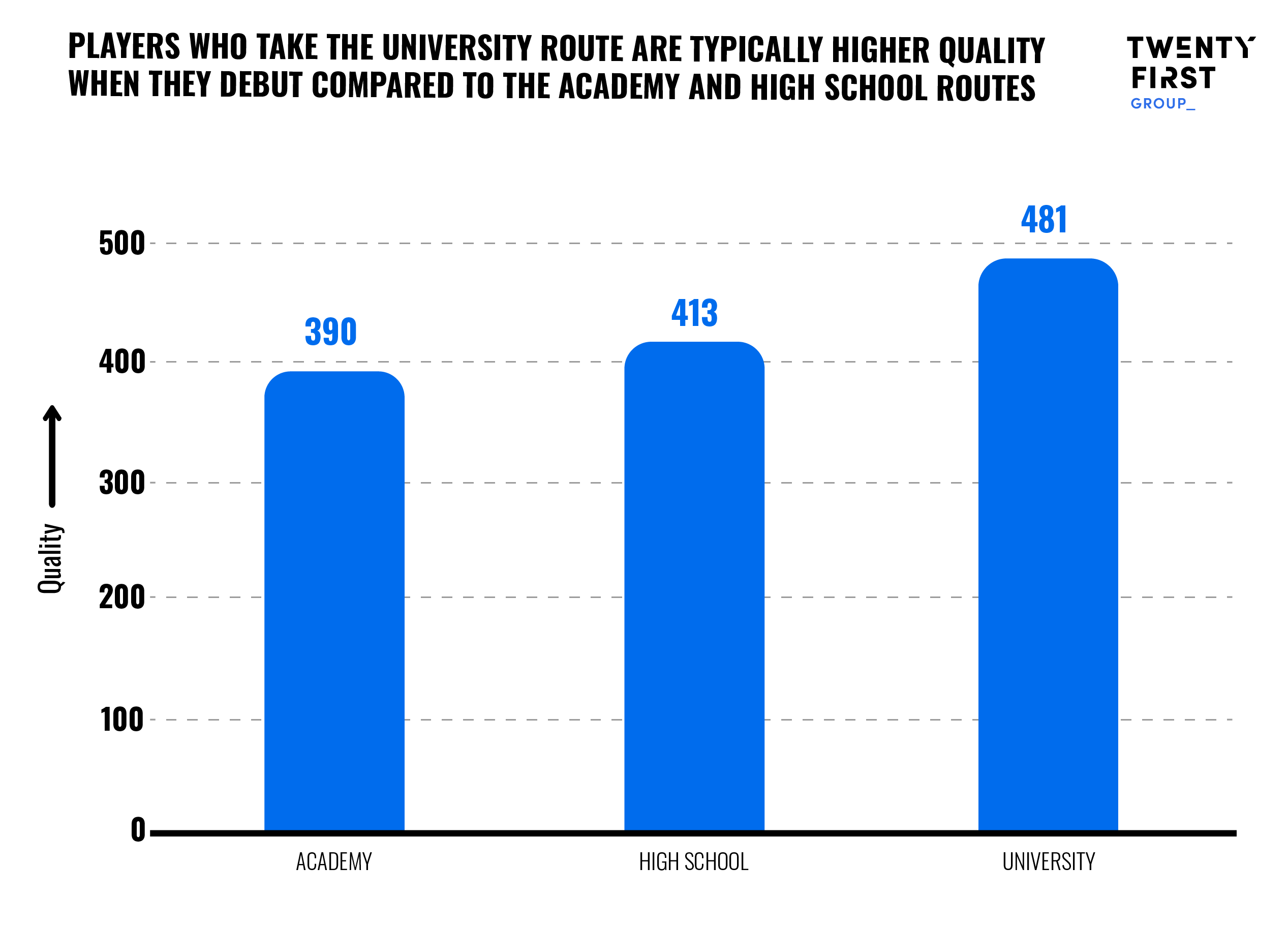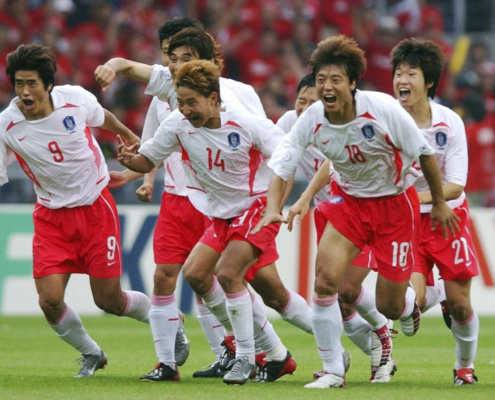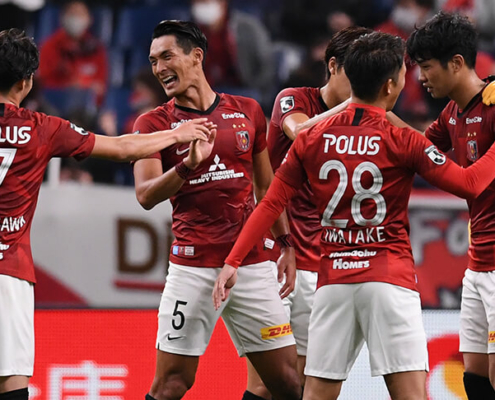Thought Leadership
Player Pathways: How Japanese Football can Maximise its Talent
9 MIN READ
Thought Leadership
Inspired by what you’re reading? Why not subscribe for regular insights delivered straight to your inbox.
Japanese football continues its march to maturity with Urawa Red Diamonds being the fourth Japanese team to contest the AFC Champions League Final in the last six years since 2017, emerging victorious in a tight tie against Saudi Arabia’s Al Hilal. The two seasons where a Japanese team did not contest the final – 2020 & 2021 – were covid-affected potentially providing some mitigation for deviating away from what is now becoming a customary dominance of club football in the East.
That Japan is home to quality footballers is being noticed by those European clubs willing to look beyond Europe’s borders. We have written previously about Celtic’s success in finding value in the Japanese transfer market, but this is only one example of Japanese players successfully plying their trade in some of the world’s strongest leagues.
*Players from countries with at least 1 appearance in the top two divisions in European countries. It is interesting to note Saudi Arabia’s lack of talent exports. The Saudi Pro League’s top teams are among Asia’s strongest – Al Hilal were Urawa Red Diamonds’ opponents in the recent AFC Champions League Final – but perhaps struggle to export Saudi players due to the domestic league allowing 8 foreign players per squad and the league’s limited international recognition. Cristiano Ronaldo’s recent move to Al Nassr and the ongoing discussions with Lionel Messi may change this.
Despite the obvious progress in Japanese football, little is known about Japan’s player pathways and the various routes that players take from being a promising young talent to a professional player in Japan’s now-elite domestic competition, J League. Japan’s current player pathway system is effectively a hybrid of the European academy and the US systems where elite sporting talent emerges from educational institutions. Specifically, Japan has three routes for promising players looking to make it to the top of the professional game:
- Academy: Like Europe, young players join a Japanese academy and emerge straight into the professional game. Recent example: Takehiro Tomiyasu (Arsenal).
- High school: Like in the US, players complete their high school education before turning professional. Recent example: Daichi Kamada (Eintracht Frankfurt).
- University: Similar to the college system in the US, players complete their university education before turning pro. Recent example: Kaoru Mitoma (Brighton).
Generally, all routes remain relevant in Japan with players able to succeed irrespective of the route taken – each route was well represented in Japan’s 2022 World Cup squad with 11 players making their professional debut from a club’s academy, 7 from high school and 8 from university. In principle, this may impinge on the development of elite Japanese talent. Our research suggests that minutes in adult professional football before the age of 21 has a significant impact on a player’s chance of developing into an elite talent (e.g. playing at UEFA Champions League level). The impact of the varied pathway is perhaps reflected in the average age of debutants in J League relative to Europe’s ‘Big Five’ leagues:
Taking Japan’s 2022 World Cup squad as an (admittedly small) sample, it bears out that the longer players stay in education, the later they debut in professional football. Interestingly, the older the age at debut, the higher quality the player, with the change in quality broadly consistent with what we’d expect based on average performance age curves suggesting that the minutes accrued in High School or University are valuable from a development perspective.
The variability of the player pathway presents a number of interesting challenges both for the Japanese Football Association (JFA) and the J League clubs. From the JFA’s perspective, better understanding whether a player’s route impacts on his peak performance will inform how to evolve the pathway to maximise the chances of National Team success in the long run. For clubs, there is a need to be knowledgeable about the talent on each route to compete for the best players, for which data analytics can undoubtedly help. And this extends beyond Japan’s borders – smart European clubs seeking to attract quality talent into their academy system would do well to consider the potential in the Japanese system, providing they can find a way to navigate it.
Either way, each of the player pathways are working to the extent that all three were well represented in Japan’s march to the last 16 in the 2022 World Cup, with defeats of Spain and Germany lending further weight to the general effectiveness of the Japanese pathways. But better understanding the relative merits of each will help inform how Japanese football can match its ambition on the pitch with the production of elite talent off of it.
Here at Twenty First Group, we’re developing a system to better enable the technical scouting of players across Japan’s pathway. If you would like to find out more about our Performance Intelligence services, or our work in Japanese football, please get in touch with Ben Marlow or Kaita Sugihara (in Tokyo, Japan).
